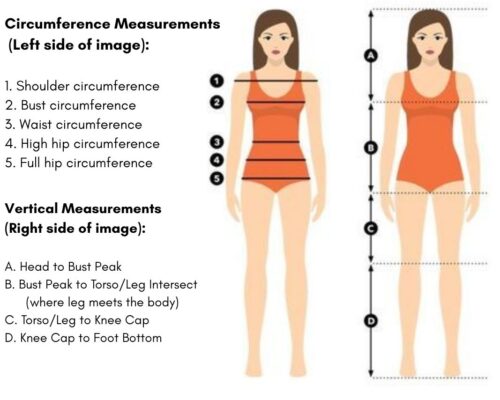Screen Printing: A Comprehensive Guide to the Art of Printmaking

Preface
Screen printing, also known as silk screening, is a popular and versatile technique used in the art of printmaking. It involves transferring ink onto a substrate through a mesh screen, resulting in vibrant and durable prints. This article serves as a comprehensive guide to screen printing, providing you with a step-by-step overview of the process, the necessary tools and materials, and tips for achieving outstanding results.
Understanding Screen Printing
Screen printing is a technique that involves using a stencil or a fine mesh screen to transfer ink onto a substrate. It offers great versatility and can be applied to various materials, including fabric, paper, glass, metal, and plastic. The process allows for precise color registration and the creation of intricate designs.
Tools and Materials
To engage in screen printing, you will need several essential tools and materials. These include a screen frame, mesh, squeegee, ink, emulsion, exposure unit, and a source of design inspiration. Each component plays a crucial role in the overall printing process.
Preparing the Screen
The first step in screen printing is preparing the screen. This involves stretching the mesh tightly over the frame and applying a light-sensitive emulsion. The emulsion must be dried in a darkroom environment and then exposed to light with the desired design to create the stencil.
Creating the Design
Design creation is a critical aspect of screen printing. You can hand-draw or digitally design your artwork, ensuring that it is compatible with the screen printing process. Taking into account color separations and layers is important for achieving optimal results.
Setting Up the Printing Area
Creating a suitable printing area is essential for smooth and efficient printing. This involves setting up a flat and stable surface, securing the substrate in place, and ensuring proper alignment of the screen. Careful attention to detail during this stage will contribute to the quality of your prints.
Applying the Ink
Once the printing area is prepared, it’s time to apply the ink. Using a squeegee, spread a controlled amount of ink over the stencil, ensuring even coverage. The squeegee’s angle and pressure influence the ink transfer, so practice and experimentation are key to achieving the desired results.
Printing Process
With the ink applied, it’s time to bring the design to life by printing it onto the substrate. Position the screen over the substrate and lower it gently, making sure the stencil aligns accurately. Apply even pressure across the screen using the squeegee to transfer the ink. Lift the screen carefully to reveal your print.
Curing and Finishing
After printing, it is crucial to cure the ink properly to ensure its durability. Depending on the type of ink used, this may involve heat-setting or air-drying the prints. Once cured, the prints can be further enhanced through additional techniques such as heat press, embroidery, or
embellishments.
Troubleshooting Common Issues
Screen printing can pose certain challenges, but with the right troubleshooting techniques, you can overcome them. Common issues include ink bleeding, stencil breakdown, and uneven prints. Understanding these problems and their solutions will help you improve your printing skills and achieve consistent results.
Tips for Successful Screen Printing
To enhance your screen printing experience, consider these valuable tips. They include proper screen cleaning and maintenance, choosing the right mesh count, experimenting with different ink types, and incorporating unique textures and effects into your designs. Practice, patience, and attention to detail will contribute to your success as a screen printer.
Exploring Creative Possibilities
Screen printing offers endless creative possibilities. From producing vibrant t-shirts and posters to designing custom invitations and artwork, this versatile technique allows you to explore your artistic vision. Experiment with different substrates, colors, and techniques to unlock your full creative potential.
Maintaining Your Screens
Regular maintenance of your screens is crucial to their longevity and print quality. Clean them thoroughly after each use, remove any excess ink or emulsion, and store them in a cool, dry place. Proper screen care will ensure consistent results and extend the lifespan of your screens.
Screen Printing vs. Other Printmaking Techniques
While screen printing shares similarities with other printmaking techniques, it offers unique advantages and distinct characteristics. Comparisons with techniques such as relief printing, intaglio, and lithography will help you understand the strengths and differences of each method, allowing you to choose the most suitable approach for your projects.
Screen Printing in Commercial Applications
Beyond artistic endeavors, screen printing plays a vital role in various commercial applications. Industries such as textiles, signage, advertising, and packaging rely on screen printing for mass production and branding purposes. Understanding the commercial aspects of it opens up opportunities for entrepreneurial ventures and collaborations.
Conclusion
Screen printing is an exciting and versatile printmaking technique that allows artists, designers, and entrepreneurs to bring their visions to life. By understanding the process, mastering the tools, and exploring creative possibilities, you can achieve outstanding results. Whether you’re printing for personal enjoyment or pursuing commercial endeavors, it offers a rewarding and dynamic avenue for expression.
FAQs
Q1: Can I use screen printing on different materials?
A-Yes, it can be applied to various materials, including fabric, paper, glass, metal, and plastic.
Q2: How long does it take for the ink to dry?
A- The drying time depends on the type of ink and curing method used. Some inks may air dry within a few hours, while others require heat-setting or additional curing time.
Q3: What is the ideal mesh count for screen printing?
A-The mesh count varies depending on the desired level of detail and the type of ink being used. Generally, a higher mesh count is suitable for fine details, while a lower mesh count is suitable for thicker inks.
Q4: Can I reuse screens for different designs?
A-Yes, screens can be reused by removing the stencil and thoroughly cleaning the screen. Proper care and maintenance will ensure their longevity.
Q5: Is screen printing environmentally friendly?
A- Yes! it can be eco-friendly, especially when using water-based or environmentally friendly inks. Proper disposal of chemicals and responsible printing practices contribute to reducing its environmental impact.
In conclusion, screen printing offers a world of creative possibilities and commercial applications. By mastering the process, understanding the tools, and exploring your artistic vision, you can create stunning prints that captivate audiences. Whether you’re a hobbyist, an artist, or an entrepreneur, screen printing opens doors to limitless potential. So grab your screens, mix your inks, and let your imagination run wild.
Thank you ! You’ve made it to the end—which means you’re officially smarter than 99% of LinkedIn skimmers.
Got questions, feedback, or a cool AI project to brag about? Message me anytime — I’d love to hear from you!
Please don’t forget to leave a review also Mention The post.




